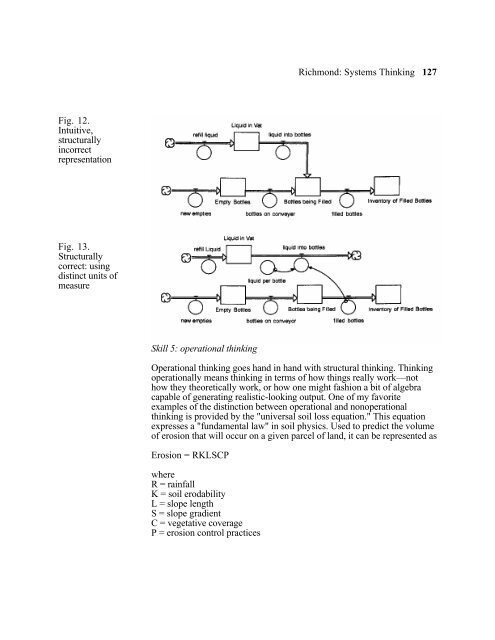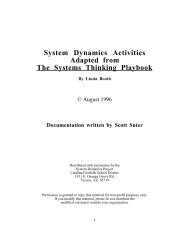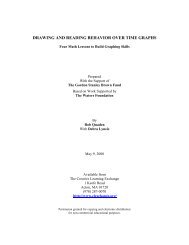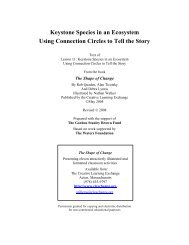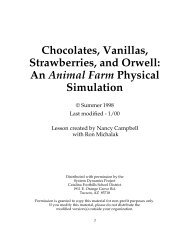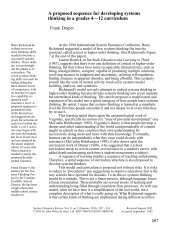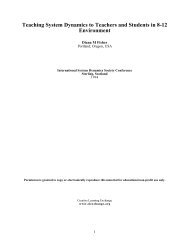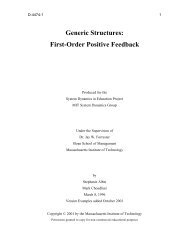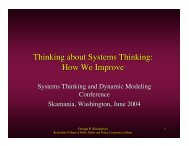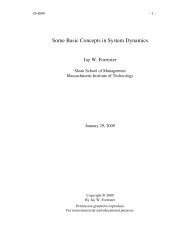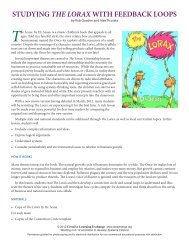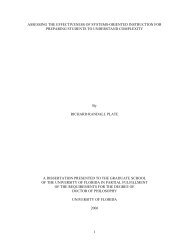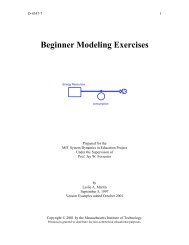Systems thinking: critical thinking skills for the 1990s and beyond
Systems thinking: critical thinking skills for the 1990s and beyond
Systems thinking: critical thinking skills for the 1990s and beyond
- No tags were found...
Create successful ePaper yourself
Turn your PDF publications into a flip-book with our unique Google optimized e-Paper software.
Richmond: <strong>Systems</strong> Thinking 127Fig. 12.Intuitive,structurallyincorrectrepresentationFig. 13.Structurallycorrect: usingdistinct units ofmeasureSkill 5: operational <strong>thinking</strong>Operational <strong>thinking</strong> goes h<strong>and</strong> in h<strong>and</strong> with structural <strong>thinking</strong>. Thinkingoperationally means <strong>thinking</strong> in terms of how things really work—nothow <strong>the</strong>y <strong>the</strong>oretically work, or how one might fashion a bit of algebracapable of generating realistic-looking output. One of my favoriteexamples of <strong>the</strong> distinction between operational <strong>and</strong> nonoperational<strong>thinking</strong> is provided by <strong>the</strong> "universal soil loss equation." This equationexpresses a "fundamental law" in soil physics. Used to predict <strong>the</strong> volumeof erosion that will occur on a given parcel of l<strong>and</strong>, it can be represented asErosion = RKLSCPwhereR = rainfallK = soil erodabilityL = slope lengthS = slope gradientC = vegetative coverageP = erosion control practices


